Pawpaw Tree
- November 14, 2023
- 0 comment
The Pawpaw tree, scientifically known as Asimina triloba, is a captivating and unique deciduous tree native to the eastern United States. Characterized by its relatively modest height of 15 to 30 feet, the Pawpaw tree stands out with its large, tropical-like leaves that can grow up to a foot in length. What truly distinguishes this tree is its exceptional fruit, also called the pawpaw.
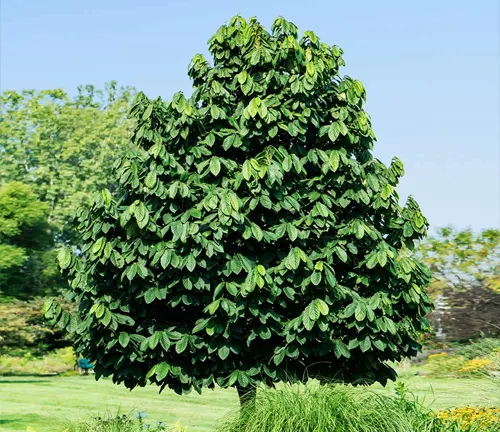
The pawpaw is recognized as the largest edible fruit of North American origin, possessing a remarkable custard-like texture and a sweet flavor profile that combines notes of banana, mango, and melon. Despite its delectable taste, the pawpaw is not as widely commercialized as other tropical fruits, mainly due to its short shelf life and sensitivity to handling.
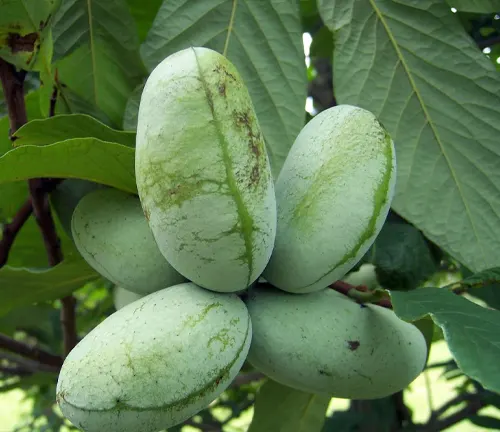
However, the Pawpaw tree is gaining attention for its potential as an alternative and locally sourced fruit crop. Beyond its culinary allure, the tree holds ecological importance, serving as a habitat and food source for various wildlife species. As interest in unique, native fruits grows, the Pawpaw tree is finding a place in both natural landscapes and cultivated spaces, charming enthusiasts with its distinctive appearance and delightful harvest.
| Characteristics | Description |
| Scientific Name | Asimina triloba |
| Common Name | Pawpaw tree |
| Height | 15 to 30 feet |
| Leaves | Large, tropical-like, up to a foot in length |
| Fruit | Pawpaw – largest edible fruit native to North America |
| Fruit Flavor | Sweet, with notes of banana, mango, and melon |
| Commercial Viability | Limited due to short shelf life and sensitivity to handling |
| Ecological Importance | Provides habitat and food for various wildlife |
| Cultivation Potential | Gaining interest as an alternative and locally sourced fruit crop |
| Appeal | Distinctive appearance and delightful harvest |
Botanical Beauty of the Pawpaw Tree
The Pawpaw tree, scientifically known as Asimina triloba, stands as a botanical marvel, enchanting onlookers with its unique features. This deciduous tree, with its modest height of 15 to 30 feet, showcases a symphony of botanical beauty through its large, tropical-like leaves that gracefully extend up to a foot in length. The intricate details of the Pawpaw’s foliage make it a captivating addition to the landscape, attracting nature enthusiasts and horticulturists alike.
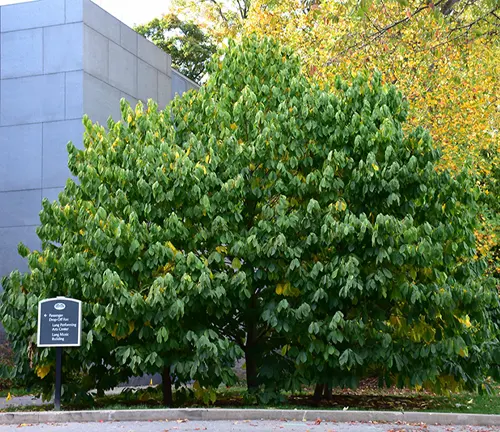
Woodland Elegance
In the realm of woodland elegance, the Pawpaw tree takes center stage. Its slender trunk and gracefully arching branches create a picturesque silhouette against the backdrop of the forest. The tree’s overall form exudes a subtle charm that contributes to the aesthetic richness of its natural habitat. As it weaves into the tapestry of woodlands, the Pawpaw becomes a testament to the understated elegance inherent in native flora.
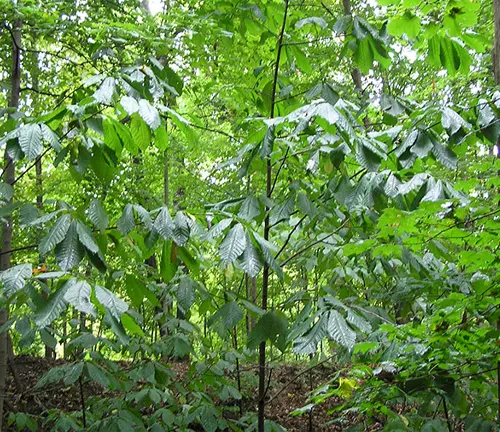
Ecological Importance
Beyond its aesthetic appeal, the Pawpaw tree plays a crucial role in the ecological theater. Acting as both host and sustenance, this tree provides habitat and nourishment for various wildlife species. Birds, insects, and mammals find refuge and sustenance among its branches and, importantly, the Pawpaw contributes to the biodiversity of its ecosystem. Understanding the tree’s ecological importance sheds light on the interconnected web of life it supports.
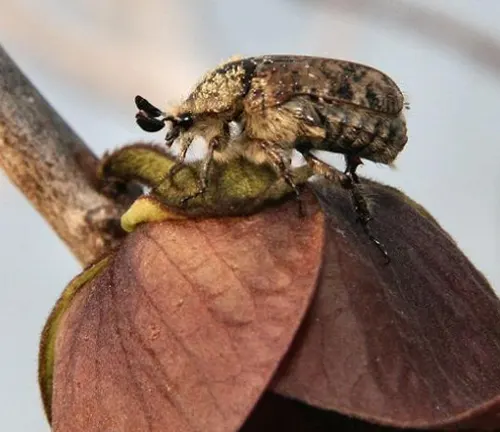
Cultivation and Conservation
As interest in unique and indigenous flora grows, the cultivation of the Pawpaw tree emerges as a topic of interest. Gardeners and conservationists alike are exploring ways to cultivate and preserve this species. Balancing the delicate nature of the fruit and the tree’s ecological significance, efforts are underway to promote sustainable cultivation practices, ensuring that future generations can continue to enjoy the benefits of the Pawpaw.
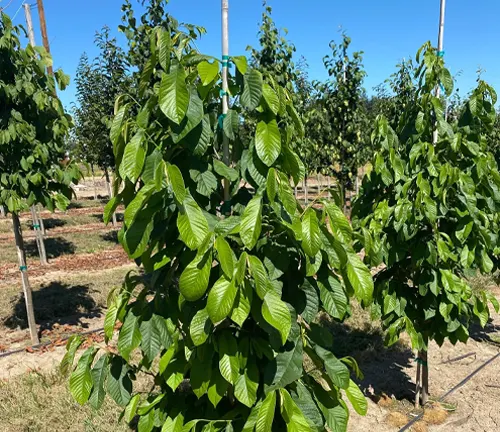
Fragrance
One cannot speak of the Pawpaw tree without delving into its aromatic allure. The tree’s blossoms emit a subtle yet enchanting fragrance, adding an olfactory dimension to its overall appeal. The sweet, floral scent wafting from the Pawpaw blossoms contributes to the sensory experience of encountering this unique tree, creating a lasting impression on those who venture near.
Soil Stabilization
The Pawpaw tree serves as a silent guardian in the realm of soil stabilization. With its extensive root system, the tree helps prevent soil erosion, offering a natural solution to maintaining the stability of the land it inhabits. This aspect of the Pawpaw’s contribution showcases its broader ecological impact beyond its immediate surroundings.
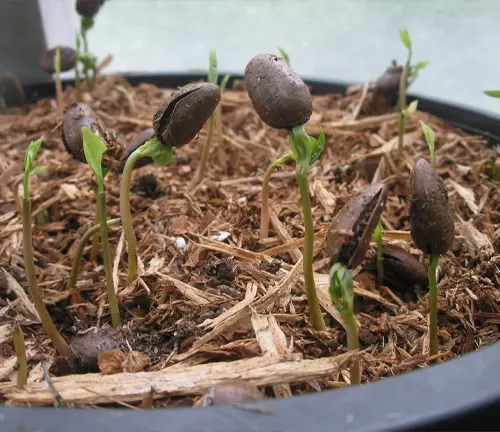
Common Uses
While the Pawpaw fruit might not be as mainstream as other tropical counterparts, it holds a special place in culinary circles. The fruit, with its custard-like texture and sweet, tropical flavor, has been utilized in various culinary creations. From jams and desserts to beverages, the Pawpaw’s unique taste adds a distinctive touch to gastronomic endeavors.
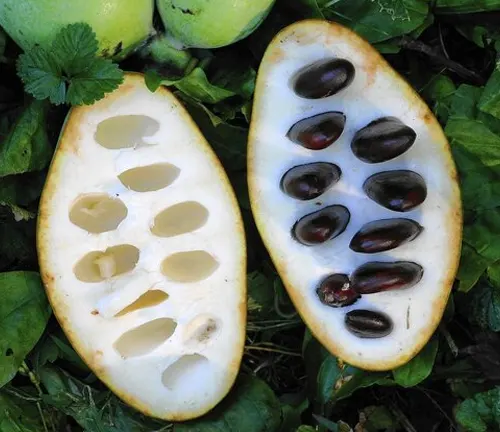
Benefits
The benefits of the Pawpaw tree extend beyond its delectable fruit. Its cultivation promotes biodiversity, soil stability, and ecological balance. Additionally, the tree’s aesthetic qualities enhance the visual appeal of natural landscapes. As awareness of native flora grows, the Pawpaw stands as a testament to the myriad benefits that can be derived from embracing and conserving indigenous plant species.
Different Species
Asimina obovata
(Bigflower Pawpaw)
This species is native to Florida and Georgia in the United States. It shares similarities with Asimina triloba but is distinguished by its larger flowers.
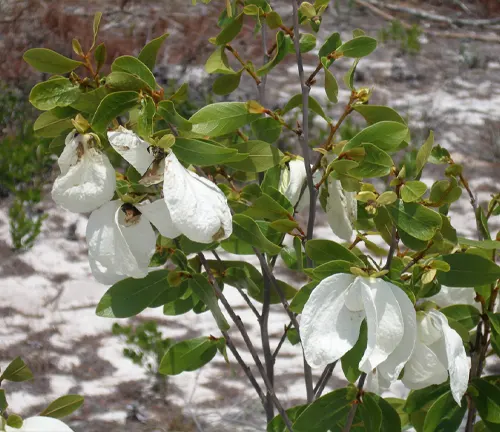
Asimina incana
(Woolly Pawpaw)
Found in the southeastern United States, this species is known for its distinctive woolly or fuzzy leaves, giving it a unique appearance compared to the smooth-leaved Asimina triloba.
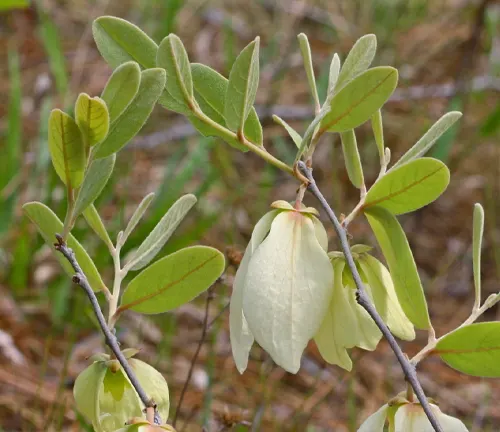
Asimina parviflora
(Smallflower Pawpaw)
Native to the southeastern United States, this species is characterized by its smaller flowers compared to the more common Asimina triloba.
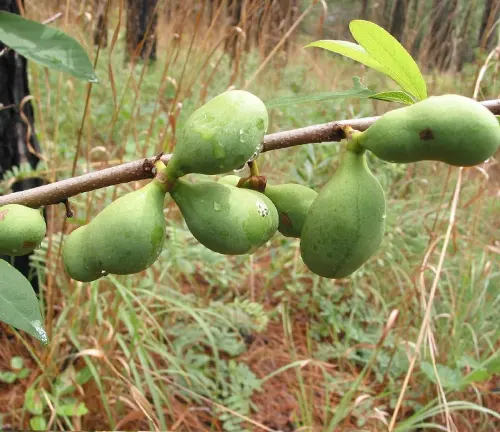
Asimina pygmaea
(Dwarf Pawpaw)
As the name suggests, this species is notably smaller in stature compared to the typical Pawpaw tree. It is found in parts of Florida and Georgia.
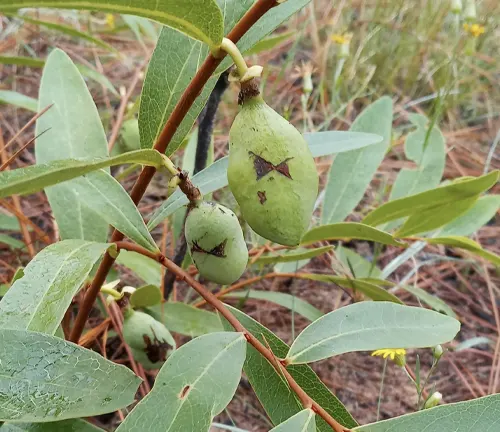
Frequently Asked Questions (FAQs)
- What is a Pawpaw tree?
The Pawpaw tree, scientifically known as Asimina triloba, is a deciduous tree native to the eastern United States. It is recognized for producing the largest edible fruit indigenous to North America. - How tall does a Pawpaw tree grow?
Pawpaw trees typically range in height from 15 to 30 feet, making them small to medium-sized trees. - What does the Pawpaw fruit taste like?
The Pawpaw fruit has a unique and tropical flavor, often described as a blend of banana, mango, and melon. The texture is custard-like. - Is the Pawpaw tree commercially cultivated?
While the Pawpaw tree has commercial potential, it is not as widely cultivated as some other fruit trees due to challenges such as a short shelf life and sensitivity to handling. - What are the ecological benefits of Pawpaw trees?
Pawpaw trees play a vital ecological role by providing habitat and food for various wildlife species. They contribute to biodiversity and assist in soil stabilization. - Can I grow Pawpaw trees in my garden?
Yes, Pawpaw trees can be cultivated in home gardens. However, they require specific growing conditions, including well-drained soil and partial shade. - How do you propagate Pawpaw trees?
Pawpaw trees can be propagated through seeds. However, due to genetic variability, it is often recommended to propagate through grafted trees to ensure desirable fruit characteristics. - When is the best time to plant Pawpaw trees?
The best time to plant Pawpaw trees is typically in the spring or fall when the weather is mild. This allows the tree to establish its roots before facing extreme temperatures. - Do Pawpaw trees have any pests or diseases?
Pawpaw trees can be susceptible to certain pests and diseases, including fungal issues. Proper care and maintenance, such as providing good air circulation, can help prevent problems. - Are all Pawpaw fruits the same?
While all Pawpaw fruits share similar characteristics, there can be variations in taste, size, and texture among individual trees and different species within the Asimina genus. - Can I eat Pawpaw fruits directly from the tree?
Yes, Pawpaw fruits can be consumed directly from the tree when they are ripe. However, they have a short shelf life and are highly perishable, so timing is crucial.


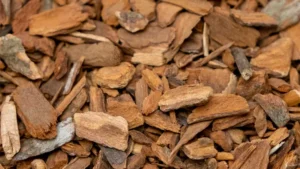
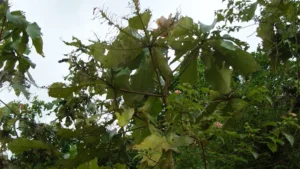
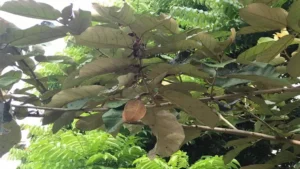
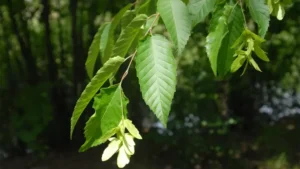

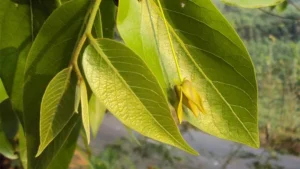

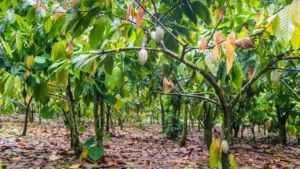
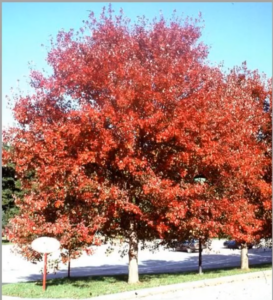
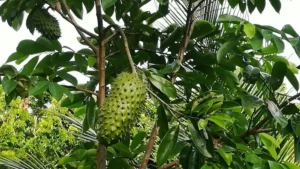
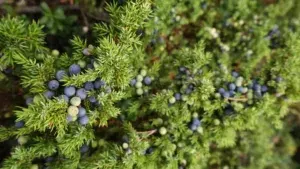
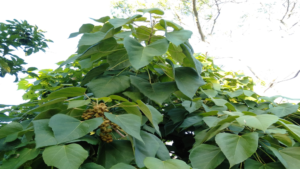
Leave your comment